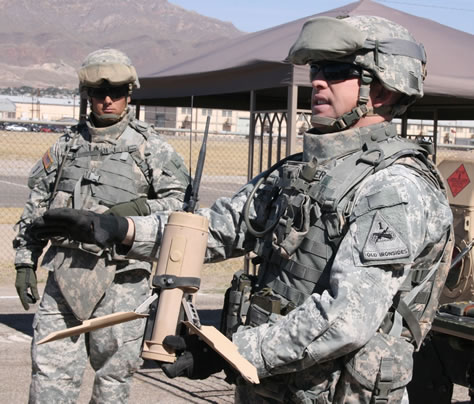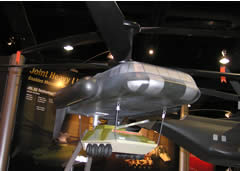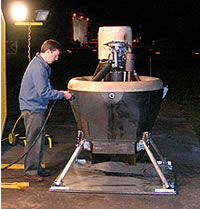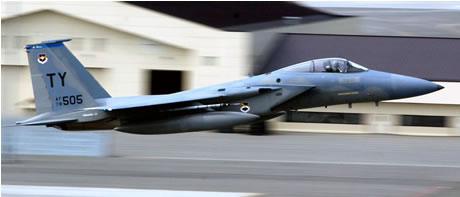President George W Bush’s visit to the Holy Land last week, was seven years too late and leaves both Israel and the Palestinian’s in turmoil. To meet his unrealistic deadline – “Peace by end of Bush’s term November 2008” seems, in simple words, a prescription for political suicide on both sides of the border.
The facts on the ground are crystal clear: while the mutual shoulder-slapping in Jerusalem’s plush five-star hotel was feted by all the dignitaries present, salvoes of Qassam rockets and mortar shells slammed into Shderot, rudely shaking the two leaders, basking in their illusions- into the stark realities. But these painful events near the Gaza border, only 70 kilometers from the King David Hotel, did nothing to deter the “historic” visit of the American president, who continued spelling out his “vision” of a peaceful Palestinian state, “living side by side with Israel”.
Only a simple question asked by one of the journalists present at the well orchestrated press conference, seemed for a moment to disturb the optimist atmosphere, which the jubilant duet, Bush and Olmert had maintained sofar.
Asked, what regarding the issues of rockets, Israel should do to stop the ever-growing rocket threat from Gaza? President Bush replied offhand, quote: “As to the rockets, my first question is going to be to President Abbas, what you intend to do about them? Because ultimately, in order for there to be the existence of a state, there has to be a firm commitment by a Palestinian government to deal with extremists and terrorists who might be willing to use Palestinian Territory as a launching pad into Israel. So I’ll be asking that question tomorrow. And what can we do to help you?” adding: “I believe that he (Abbas) knows it’s not in his interests to have people launching rockets from a part of the Territory into Israel “.
Mr Bush went even further to hint, that Israel might well use force to protect itself, but keep within acceptable bounds to spare innocent lives in the process. Whether the president repeated his intention to Chairman Mahmound Abbas, during his following vist to Ramallah next day, is totally irrelevant, as Abbas and his Fatah security forces are neither able, nor willing to take over any responsibility in Gaza, not to mention their impotence in controlling the outlaws throughout the West Bank, which is allegedly under their direct authority.
But there is an even more serious entanglement in store, if Mr Bush’s vision is to be implemented during his remaining tenure in 2008. Unconfirmed reports leaking from the secret meetings in Jerusalem, indicate that President George W. Bush gave Israel the an all-clear ahead nod, for its long-delayed military operation against Hamas in Gaza. It is now common knowledge, that a similar wink was given Olmert on the eve of his botched Lebanon Two adventure, now focus of the oncoming Winograd Commission report later this month.
It is certain that a military foray into the Gaza Strip will not be a walk- in- the- park for the IDF. Hamas has learnt a lot from Israel’s deplorable conduct during the Second Lebanon War, as well as its past actions in Gaza and the West Bank. It’s rocket offensive into Israel is direct copy of Hezbollah tactics, trying to achieve strategic results with simple means. Having already established a military division-size army, of some 10,000 equipped and trained by Hezbollah and Iranian instructors, they operate soldiers with similar tactics used by the Shi’ite guerilla.
IDF Southern Command chief Major General Yoav Gallant, warned that Hamas could bolster its forces to include anti-tank units and special forces. Having gained access to advanced weapons systems, including night-vision apparatus and even air defense missiles, could pose great danger to IDF freedom of operations in the Gaza strip, the general told the Knesset committee. Yuval Diskin, the head of Shin Bet, Israel’s internal security service, detailed how Palestinian terrorists have smuggled more than 112 tons of explosives into Gaza since Israeli occupation forces withdrew from the strip in 2005, with 70 tons, or roughly 63 percent of the total, coming in, since Hamas’ coup, last June. Brigadier General Moshe (Chico) Tamir, commander of the IDF Gaza Division, told reporters in Jerusalem that Hamas is secretly building a Hezbollah-like bunker system to complement fortified rocket-launching and surveillance positions.
Hamastan in Gaza is certainly a great catastrophe for Abu Mazen. Half of his Palestinian people are not under his authority and there is near Zero chance that he can regain control over Hamastan, which was taken from his security forces, nearly ten times the size of Hamas, withinn hours, in a bloody coup d’etat, last June. Even in the West Bank, Abu Mazen can boast to be really in control of not much more, than his immediate surroundings of the Mukatta fortress in Ramallah. Taken as a deplorable fact, only the IDF and Israel’s Shin Bet, have sofar prevented Hamas to rout the Palestine Authority (PA) security in the West Bank, which would have suffered a similar fate, that their comrades lived through in Gaza.
But even for Hamas itself the situation in Gaza is not entirely euphoric. Hamas may have reaped a small and easy victory, over a weakly motivated opponent like Fatah, last June, but by its irresponsible actions, Hamas leadership has already brought about Israel’s declaration of Hamastan as enemy territory, with all its inevitable repercussions in future actions. The Hamas’ occupied Gaza Strip is scooped up, fenced off from Israel and Egypt, their two only exits. They are surrounded by a strong Israeli army and cut off from their homeland in the West Bank. They are isolated from the West, and even regarded with high suspicion, by the majority in the Arab world. Excepting Iran and Syria, they are banned politically from the rest of the world.
Eliminating Hamas for Abu Mazen’s benefit by an Israeli military action would prove a grave mistake. Operationally, this means the Israeli army could perhaps push back the Qassam missile launching sites from its border region, but the IDF will certainly refrain capturing the main cities, especially Gaza City itself. These will therefore remain ideal launching sites for rockets, shielded by dense population centers, which Israel will hesitate to attack from the air. Occupying only the sparsely populated areas, like the northern pocket of Beit Hanoun, Beit Lahiya and the fringes of the Jebalya refugee-camp; the southern areas east of Khan Younes up to the Sufa and Kerem Shalom crossings; and sections of the Philadelphi border strip with Egypt, will only render temporary respite, if any at all, to the continued bombardment of Shderot. Moreover, after clearing captured areas of Hamas, Jihad Islami and other Palestinian terrorists, the Israeli army would probably be forced to pull out and hand the “cleansed” territory to the forces of Palestinian Authority chairman Mahmoud Abbas. This is what President Bush actually has in mind to solve the Qassam problem, sources say. It means, in “unfettered text” that the “grandiose” Israeli counter-terror operation in the Gaza Strip should actually be exploited to prepare the ground for the Fatah-ruled Palestinian Authority, to regain its control of the lost territory and clear the “last” obstacle for a joint peace declaration by Israel and a reunited Palestine!
Whether Ehud Olmert’s government has accepted this extraordinary “plan”, remains enigmatic, but based on leaks from the recent utmost friendly dialogue and Olmert’s overacting flattery towards his visitor, this astounding plan, unfortunately, cannot be ruled out entirely as feasible. Whatever the case may be, any adoption of such a controversial idea, will no doubt stir considerable outrage within the Israeli political community and certainly in the IDF Brass and the security establishment. The very idea of Israel’s national army being pressed into service to capture a territory on behalf of a foreign entity, and that of an openly declared hostile one, will be regarded as abhorrent. That such an idea is circling at all, virtually only days before the Winograd Commission report, must present the ultimate nightmare to Olmert’s closest entourage.
But should the Israeli military even succeed pulling Abu Mazen’s “chestnuts out of the fire” in Gaza, it is common knowledge that once inside the strip, Palestine Authority security forces will quickly disintegrate once again, only to be swallowed up by the far more resolute Hamas. In fact, the Bush-Olmert policy, of placing all their bets for a Middle East breakthrough, on the inept Mahmoud Abbas, condemns any plan of theirs to certain failure.
But Israel is on the horns of a most difficult dilemma. With more Qassam Rockets flying out from Gaza, some with longer and more accurate range, more Israeli towns and cities are now coming under fire. This was correctly predicted even before Israel retreated from the Gaza Strip two years ago. Defense Minister Ehud Barak has been saying for months that with every day that passes, Israel draws closer to a large operation in Gaza in face of the incessant Qassam rocket attacks and the unprecedented Hamas military buildup there. The Qassam rocket being a “statistical” weapon, it has no in-built guiding system, nor any accuracy, as to where it is going to impact. Any minute a rocket could hit a prime target, such as an over-crowded kindergarden in Shderot, killing hundreds of innocent children- and what then?
Assuming the IDF eventually does go into Gaza, what are its chances of its success? The current improvement in the ongoing situation is not much of a predictor. The IDF is returning a lot of fire, from the air, in concert with the accurate firing of missiles from the ground, with limited and tightly controlled, tactical engagement on the ground, with the Palestinian forces. In focused actions, it is easy for the army to maintain Israel’s technological superiority, but the deployment of large scale forces deeper into the Strip and for an extended period, would involve infinitely more costly contact. Merely “softening up” the opposition inside the urban areas, prior to the introduction of the forces, will require massive artillery fire and air support that is almost guaranteed to cause scores of civilian casualties as well. Moreover, fighting in the closed, dense and highly populated Gaza refugee camps will quickly erode any technological superiority, which the IDF wishes to exploit and force the infantry and armor to fight a costly urban combat, in which Hamas will be able to operate with substantial skill and motivation.
Israel cannot allow its army to suffer another fiasco after the Second Lebanon war 2006. IDF Chief of Staff Gabi Ashkenazi solemnly declared that under his leadership the IDF will not suffer another defeat such as the Second Lebanon War failure. The army chief’s desire to prompt the prime minister and his government to allow him and the IDF to embark on a large-scale Gaza operation, in order to improve the situation of Shderot and other regional communities, may be understandable. But the army’s inability, sofar, to bring about a complete cessation of Qassam fire directed at Gaza-region communities is a challenge which has to be taken up with extreme care.
Even if Israel is able to reoccupy the Strip without suffering too many losses, which is disputed within and outside the army, and even if the IDF kills or detains Hamas and Jihad leaders, commanders and activists –the IDF will not be able to eliminate the resistance and the eventual re-launching of Qassam and mortars. Moreover, a new occupation of the Gaza Strip will result in bloody guerilla warfare, inflaming the Palestinians not only in the Gaza Strip, but also spilling over into the West Bank, with all its implications, in both Israel and Palestine.
Retired Brigadier General Shlomo Brom of the Institute for national security studies (INSS), said recently that, as a result of the Second Lebanon War there is a negative mood among the Israeli public and that the lack of confidence in the government is unprecedented. The chief lesson from the war, emphasized in the Winograd Commission’s interim report, is the need to weigh carefully, whether decisions on military operations are compatible with the ability of these operations to achieve realistic military objectives that will realize Israel’s strategic goals. All of these were added to the basic Israeli reluctance, dating from even before the war in Lebanon, to be drawn back into the “Gazan swamp”. According to General Brom, Israel would do well to be cautious and not succumb to the illusion that there is a comprehensive solution to the Gaza Strip problem. In the past even an Israeli presence in the Philadelphi Corridor (on the Egyptian border at Rafah) did not prevent weapons smuggling and only limited it to some extent. One lesson Israel would do well to learn from the war in Lebanon is that the unsatisfactory results of the ground war, stemmed largely from the lack of sufficient preparedness by Israel.
Based on such somber assessments, it seems that the time has come to disengage the Israel- Palestinian process from wishful thinking illusions and concentrate on more realistic solutions in order to prevent another, even more painful catastrophe, threatening to engulf the people on both sides of the holy-land borders.


 The U.S. Army has accelerated testing of two
The U.S. Army has accelerated testing of two 
























